The landscape in Norfolk is spare and windswept beauty, its salt marshes, sand dunes, creeks, harbours and beaches, its forests of holm oak and Scots pine, its bonsai chalk streams, its haunted Roman roads, its ruins of castles and priories and its stunning birdlife were almost undiscovered in the 1970s.
It’s not like the 1970s any more. At least not until winter, when the already thin crowds disperse and locals like me stride out ‘to the lonely sea and the sky’ and feel we own the landscape once again.
Cley next the Sea windmill and surrounding marshes in Norfolk ©Alamy
In winter, Norfolk fills with geese and empties of people. Literally. More than a third of the global population of pink-footed geese comes to north Norfolk in winter. At dawn and dusk, thousands upon thousands of them take flight from foreshore and field and in endless waves fill the sky with their bossy but plaintiff honking. It is an amazing sight and sound.
Related articles

Norfolk Coast wildlife
The entire coast is a paradise for wildlife enthusiasts – seals, hares, birds of all kinds, otters if you’re lucky – even if, or perhaps because, this is not a winterscape for the faint-hearted. Norfolk stalwarts like to say there’s not a scrap of land between here and the North Pole. And they’re right; there isn’t. It’s more a symbolic statement than anything else; the weather is not often straight out of the north, but it suggests an affinity that is not far from the truth. Norfolk is cold. It is also dry and bright and the skies, day or night, provide a glimpse of the eternal.
Pink-footed geese
Pink-footed goose ©Alamy
Thousands of these Icelandic migrants spend the winter in north Norfolk. You will hear them long before you see them, an avian football-crowd chorus that carries for miles over the marshes. They fly from foreshore to inland fields at dawn and back again at dusk. Good places to see them are Snettisham or Titchwell RSPB reserves (rspb.org.uk), Holkham National Nature Reserve (holkham.co.uk), the Norfolk Wildlife Trust marshes at Cley (norfolkwildlifetrust.org.uk), or any part of the North Norfolk Coastal Path where it runs between salt marsh and inland beet fields.
Grey seals
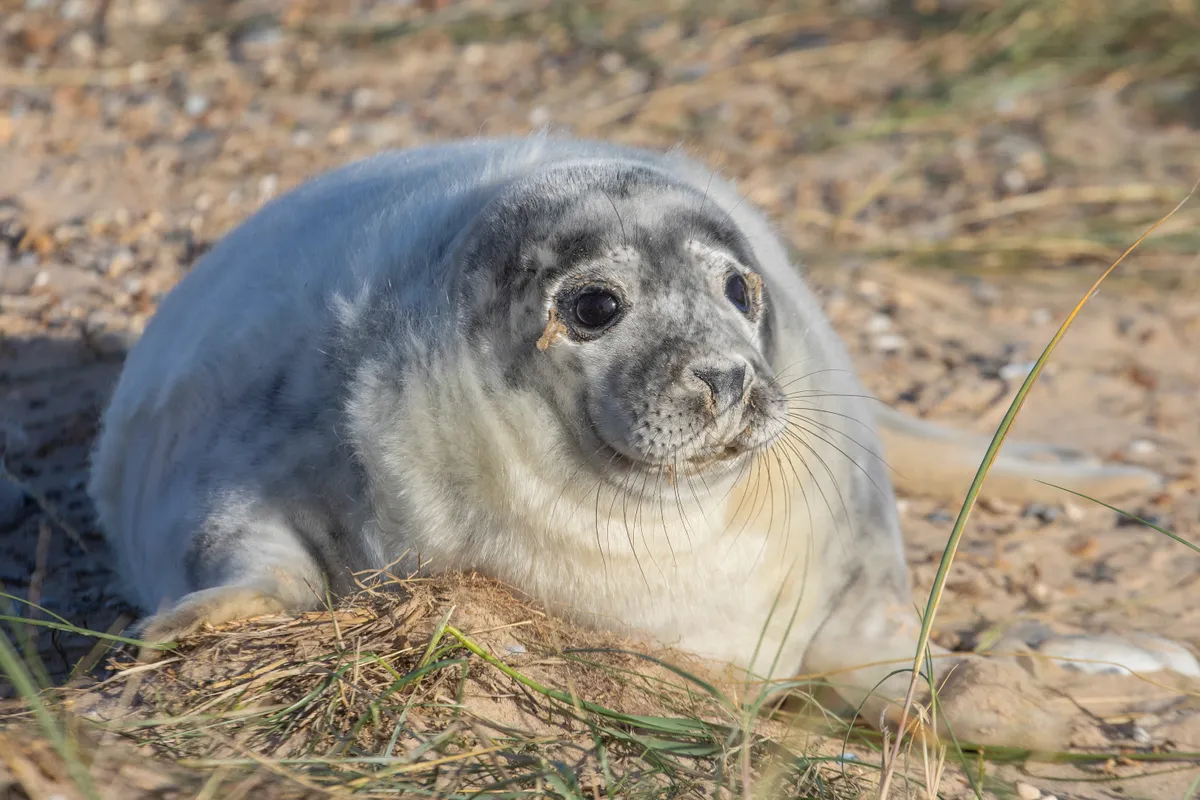
North Norfolk has a nationally important population of grey seals which pup in winter. They should be observed from a distance and pups – even if they appear to be on their own – should never be disturbed. Jim Temple runs seal-watching boat trips from Morston Quay to Blakeney Point with a timetable that runs throughout the winter (01263 740791, sealtrips.co.uk). Get timetables and tickets from The Anchor Pub, Morston (morstonanchor.co.uk).
For more on seal-watching trips, go to nationaltrust.org.uk/blakeney-national-nature-reserve
History on the coast
That spiritual heritage goes back a long way. I vividly remember when ‘Seahenge’ was discovered just a couple of miles from my home on the beach at Holme-next-the-Sea, a Bronze Age circle of timber with the upturned roots of an oak tree at its centre. This wooden chapel had remained buried under the sands through the millennia but emerged after a storm as testament, surely, to the transcendent quality of the north Norfolk skies.
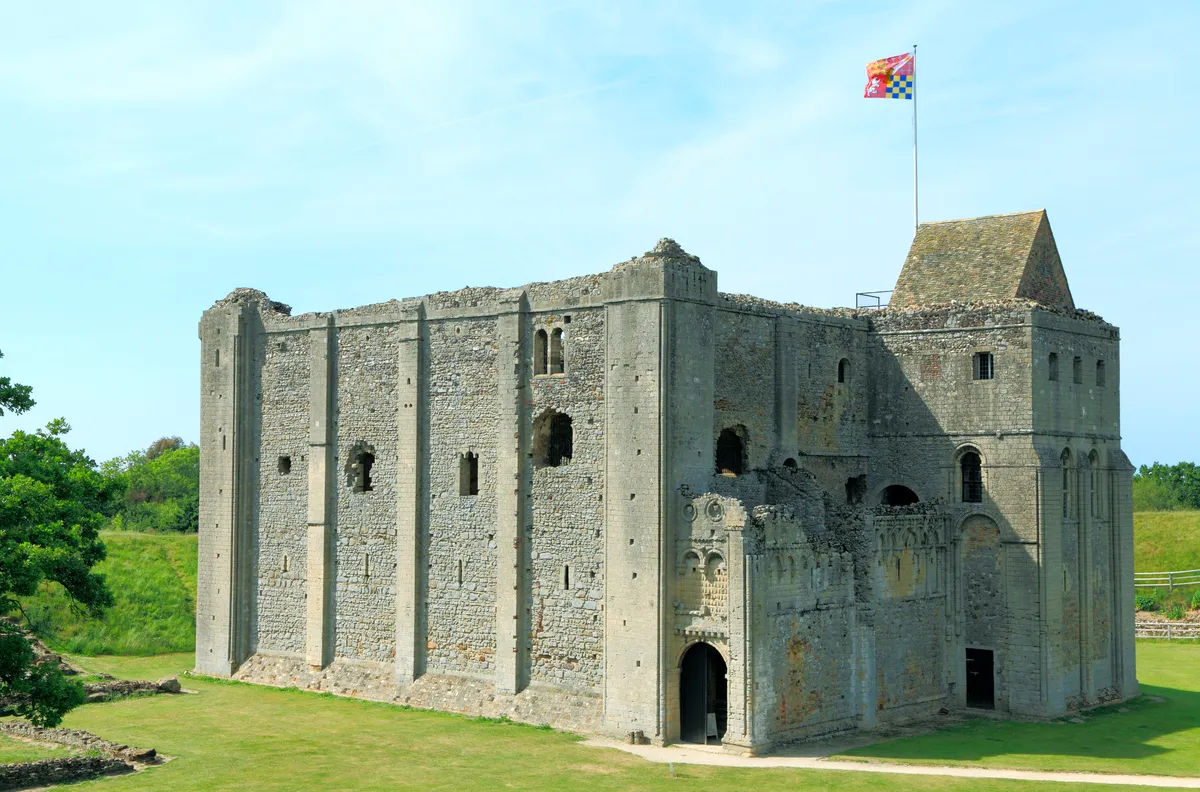
The RNLI Henry Blogg Museum
This thought-provoking, humbling museum tells the story of Cromer men who have risked, and still risk, their lives to rescue those in danger at sea. Open Tue–Sun, 10am–4pm. 01263 511294, rnli.org/henry-blogg-museum
Lynn Museum
A winter visit to Norfolk today, therefore, would start well in the Lynn Museum to which the timbers and tree were removed: they are displayed wonderfully. There is a second circle, by the way, still under the sands at Holme. It came to the surface after rough weather a few years ago and, within a few weeks, was buried again.
As well as a life-size replica of Seahenge, Lynn Museum has a quirky collection of paintings of local landscapes, windmills, quays and the town. Market Street, King’s Lynn PE30 1NL. Open Tues–Sat, 10am–5pm. 01553 775001, museums.norfolk.gov.uk/lynn-museum
Castle Rising
Between King’s Lynn and the coast at Holme is Castle Rising, described by English Heritage as “one of the largest, best-preserved and most lavishly decorated castle keeps in England, surrounded by 20 acres of mighty earthworks”. I last went there with the family at new year. A thick fog had shut out the surrounding world and we felt quite alone and profoundly in touch with the past in a hushed echo chamber under the looming, saturated walls of the keep. Open Weds–Sun, 10am–4pm, english-heritage.org.uk.
And more
The coast and its hinterland are rich in fortified and ecclesiastical ruins, those tree chapels at Holme being just the start of things, historically speaking. There’s also the Roman fort at Branodunum, and the stridently straight march of Peddar’s Way that leads to it, one of the best ways of approaching the coast on foot, following in ancient footsteps. Further east, Baconsthorpe Castle – ‘open any reasonable time during daylight’ – makes for a quirky, East Anglian take on Ozymandias, a ruin that tells of the rise and fall of a prominent ancient family (english-heritage.org.uk).
Being only 1,000 years old, Binham Priory is a new-build in Seahenge terms, but underlines again the connection between the coastal fringe and the heavens, even if its priors, over the centuries, were more inclined to earthly pleasures and scandal (open daily, 9am–4pm, english-heritage.org.uk). The Augustinian Creake Abbey, set beside the tiny River Burn, completes the coastal tour of ruined antiquity; it’s worth knowing there are shops and cafés set in a cluster of farm buildings next door and a farmer’s market on the first Saturday of the month (open daily, english-heritage.org.uk, creakeabbey.co.uk).
Towns and villages
Kings Lynn
Take a stroll around King’s Lynn. Not far from the museum you’ll find, clustered around the quay and the ‘Tuesday’ and ‘Saturday’ Market Places, an astonishing conglomeration of architectural interest and occasional perfection; the quayside Custom House is described by Nikolaus Pevsner as “one of the most perfect buildings ever built”.
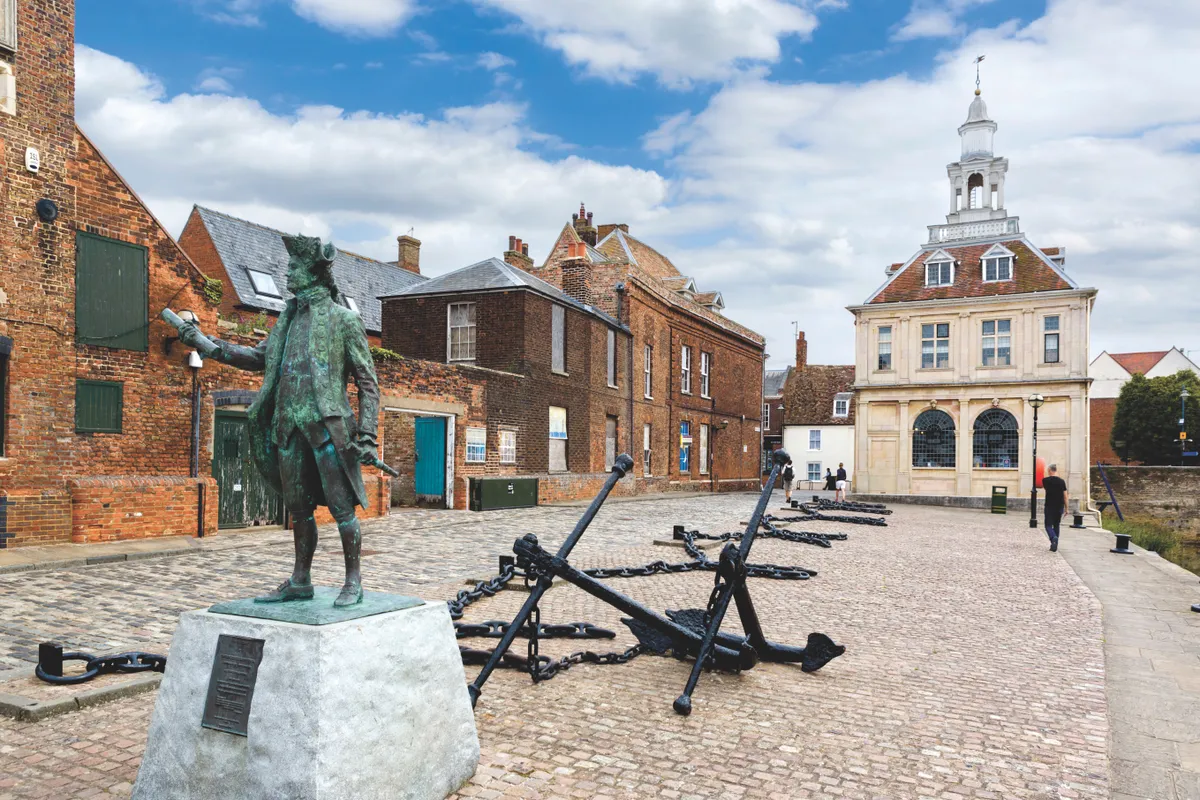
It now hosts the town’s tourist information centre, open daily. The largest chapel in the country, St Nicholas’ Chapel, dwarfs most churches and would make a modest cathedral (stnicholaskingslynn.org.uk). It was built to serve the one-time fishing community of the town. Carved wooden bench-ends inside the chapel date its early fishery to the 15th century, when King’s Lynn fishermen would sail each summer to catch cod off the Icelandic coast. Beside the chapel, True’s Yard is now a fisherfolk museum set around two of the houses fishing families once lived in (Tue–Sat, 10am–4pm, £3, truesyard.co.uk).
Burnham Market
Nearby Burnham Market is one of north Norfolk’s better-known village jewels, a delightful cluster of Georgian houses set around a wide-open market space, now grassed over. With its array of galleries, jewellers, milliners and old bookshops, you probably won’t find a better place to go shopping. There are also Wells or Holt to try. Wells is a fabulously varied seaside town, with its quay and fish-and-chip bars, its intricate courtyards, lanes and eclectic shops: chandlers to delis to boutiques.
Places to stay
Appleton Water Tower
You won’t find a more spectacular place to stay than 18m-high Appleton Water Tower, run by The Landmark Trust, with bird’s-eye views over the Royal Estate of Sandringham. Sleeps four; £647 for three nights in January. 01628 825925, landmarktrust.org.uk
The Victoria Inn

The Victoria Inn (known as The Vic) at Holkham puts you at the gateway to those spectacular beaches to the north – at walking distance to Holkham Beach's golden sands – and the 18th-century Palladian Holkham Hall to the south. With luxurious bedrooms and an excellent bar and restaurant it makes for a perfect midwinter retreat. B&B from £160 for a double room. 01328 711008, holkham.co.uk
The Blakeney Hotel
You won’t find a better view in Norfolk than that from The Blakeney Hotel’s first-floor sitting room across the quay to the sailing boats and salt marshes and out to Blakeney Point. This excellent, popular hotel is approaching its 100th birthday and has a loyal following. B&B from £122 per person. 01263 740797, blakeney-hotel.co.uk
Where to eat
Wells Crab House, Wells-next-the-Sea
Serves incredibly fresh, locally caught seafood in an unpretentious café near Wells harbour. A typical menu includes dressed crab, of course, but also mackerel, halibut, local oysters and mussels.
01328 710456, wellscrabhouse.co.uk
Eric’s Fish & Chips at Drove Orchards, Thornham
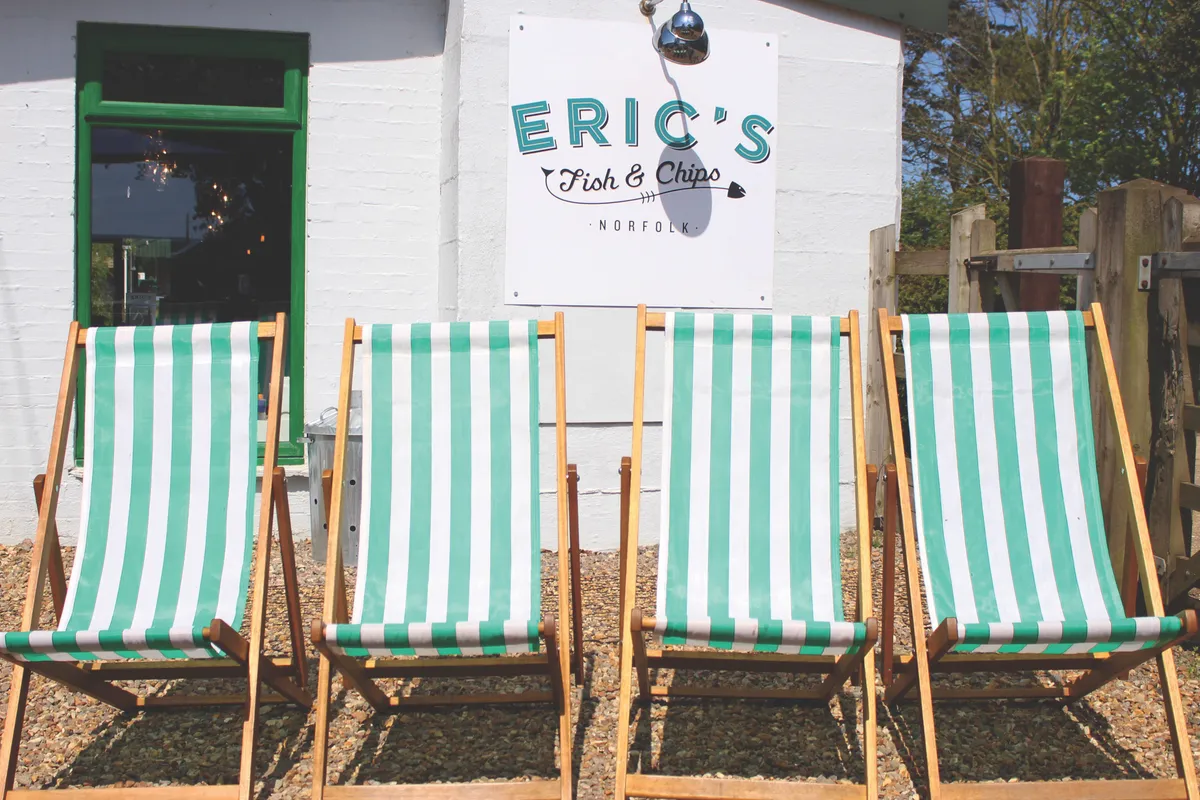
Offers fish and chips with a difference: hearty fillets of fresh cod, great chips and mushy peas plus an intriguing selection of craft ales. 01485 525886, ericsfishandchips.com
The Neptune, Old Hunstanton
You’ll have to book ahead, but Kevin and Jacki Mangeolles’ The Neptune in Old Hunstanton offers Norfolk’s gastronomic best-kept secret. They have a Michelin star and three AA Rosettes and The Neptune is only a stone’s throw from superb coastal walks. 01485 532122, theneptune.co.uk
Walks
My favourite walk runs west from Lady Anne’s drive at Holkham through the woods to a range of mountainous sand dunes: with salt marshes to your left and the wild sea to your right, keep going up and down through the volcanic blowholes in the sand until you reach the gap in the dunes at Gun Hill. At low tide (only at low, not when the tide is running!) this channel becomes the most delightful wild swimming pool. Take a bracing dip and you’ll have earned your supper at Holkham’s The Victoria Inn. You’ll also be glowing like a furnace andwill have added a year to your life.
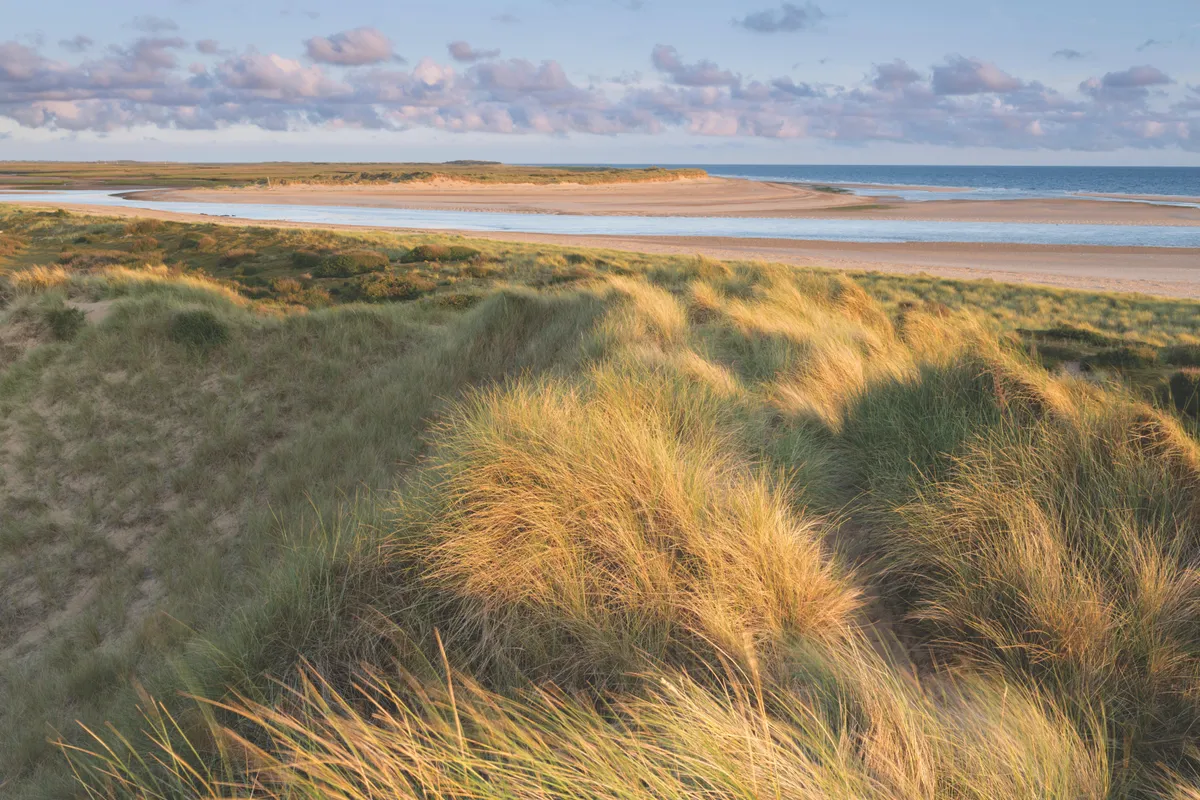
Park on the ‘hard’ at Burnham Overy Staithe. On dry and bright days, take your shoes off and walk the creek (at low tide) to Gunhill and back. Recite AA Milne’s Sand Between the Toes as you go.
Just south of Ringstead, a hedge-lined path leads to a lovely, sheltered walk through Ringstead Downs. After a snowfall, this is the best place for tobogganing in the whole county, but it makes for a fabulous walk anytime.
The Norfolk Coast Path runs along the entire coast, but try the section from Morston to Blakeney to Cley. There are cafés in each village and breathtaking strolls between. nationaltrail.co.uk/peddars-way
Discover more great walks in Norfolk.
Words: Charles Rangeley-Wilson
